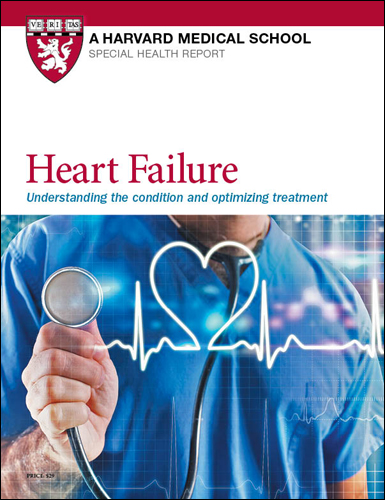Measuring ejection fraction
Ask the doctor
 Q.
After my echocardiogram, my doctor said that my ejection fraction was on the low side and I should get it checked again in a few months. What exactly does the term ejection fraction mean?
Q.
After my echocardiogram, my doctor said that my ejection fraction was on the low side and I should get it checked again in a few months. What exactly does the term ejection fraction mean?
A. Ejection fraction is the fraction (expressed as a percentage) of the blood that your heart "ejects" out to the rest of your body each time it contracts. For example, an ejection fraction of 60% means that each time your heart beats, 60% of the blood in the main pumping chamber (the left ventricle) is squeezed out by the heart muscle contracting.
Because we're used to thinking that 100% is ideal, an ejection fraction of 60% may sound quite low. But healthy hearts pump out only about half to two-thirds of the blood from the left ventricle. So, a normal ejection fraction is about 55% to 70%.
An ejection fraction between around 40% and 50% is considered borderline low. Sometimes, this reflects heart muscle that was weaker but is now recovering. Other times, a slow decline in heart muscle function is to blame. Anything below 40% means the heart is struggling to provide sufficient blood to the body.
One possible cause of a low ejection fraction is damage from a previous heart attack. Another is cardiomyopathy, a disease of the heart muscle that has many different causes, including viral infections and genetic disorders. A leaky valve or narrowed heart valve or chronic, untreated high blood pressure can also decrease ejection fraction. An abnormally fast heart rate for a long period of time, such as from uncontrolled atrial fibrillation, can make the heart appear weak. Sometimes heart muscle function improves once the underlying cause is treated, but not always.
An echocardiogram (heart ultrasound) is the most common way to measure ejection fraction, but other tests can also provide the measurement. One that is often done to investigate chest pain is a nuclear stress test, in which a radioactive substance is injected into a vein and a special camera detects the radiation. The resulting images reveal blood flow in the heart muscle. Another is a cardiac catheterization, in which a cardiologist snakes a thin tube (catheter) though an artery in the arm or leg up to the heart. The primary purpose is to look for blocked arteries. But with an additional step, an extra picture can reveal how well the left ventricle is pumping. Other imaging techniques, including MRI or CT, can also measure ejection fraction. Be aware that if you have more than one of these tests, the ejection fraction measurements may differ slightly. And remember that the ejection fraction is just one number. Many other factors help determine how well the heart is working.
Illustration by Scott Leighton
About the Author

Deepak L. Bhatt, M.D., M.P.H, Former Editor in Chief, Harvard Heart Letter
Disclaimer:
As a service to our readers, Harvard Health Publishing provides access to our library of archived content. Please note the date of last review or update on all articles.
No content on this site, regardless of date, should ever be used as a substitute for direct medical advice from your doctor or other qualified clinician.













